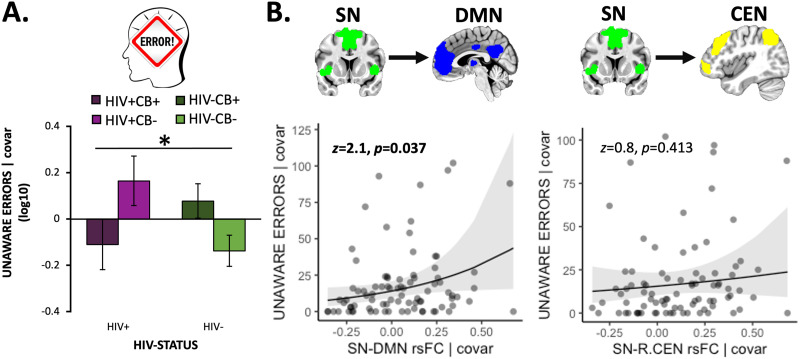Figure 2. .
Error awareness behavior was linked with SN-DMN rsFC strength. (A) We observed an HIV × CB interaction (F[1, 101] = 5.9, p = 0.017) when considering error awareness (operationalized as the log-transformed number of unaware errors [log10(x + 1)]) such that both the HIV-only (HIV+/CB−) and CB-only (HIV−/CB+) groups (relative to controls, HIV−/CB−) failed to indicate awareness of more errors, whereas the co-occurring (HIV+/CB+) group displayed fewer unaware errors more akin to that of controls. (B) Increased salience network–default mode network (SN-DMN) resting-state functional connectivity (rsFC) correlated with more unaware errors in the Go/NoGo task (n = 85, b = 1.7 [0.8], z = 2.1, p = 0.037). In contrast, SN rsFC with the left central executive network (L.CEN, data not shown: b = 0.6 [0.7], z = 0.8, p = 0.430) or right CEN (b = 0.6 [0.8], z = 0.8, p = 0.413) was not linked with error awareness. Unstandardized residuals are plotted after regressing out effects of covariates. Error bars = standard error of the mean.

